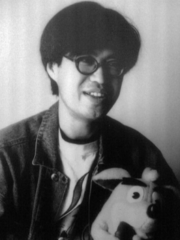Difference between revisions of "Masahito Shimizu"
From Sega Retro
(Changed employement, added Sega R&D 1) |
|||
| (One intermediate revision by the same user not shown) | |||
| Line 8: | Line 8: | ||
| start=1989{{ref|https://web.archive.org/web/20230427094808/https://news.denfaminicogamer.jp/interview/190625a}} | | start=1989{{ref|https://web.archive.org/web/20230427094808/https://news.denfaminicogamer.jp/interview/190625a}} | ||
| end=1996{{ref|https://web.archive.org/web/20230427094808/https://news.denfaminicogamer.jp/interview/190625a}} | | end=1996{{ref|https://web.archive.org/web/20230427094808/https://news.denfaminicogamer.jp/interview/190625a}} | ||
| − | | divisions=[[Sega R&D 1]]{{ref|https://web.archive.org/web/20211013155326/https://twitter.com/tsurumy/status/1448308869239697412}} | + | | divisions=[[Sega R&D 1]],{{ref|https://web.archive.org/web/20211013155326/https://twitter.com/tsurumy/status/1448308869239697412}} [[Sega AM3]]{{ref|https://web.archive.org/web/20200826124950/https://twitter.com/tsurumy/status/1298603430198607875}} |
}} | }} | ||
{{Employment | {{Employment | ||
Latest revision as of 06:36, 16 September 2023

|
| Masahito Shimizu |
|---|
| Employment history:
Divisions:
|
| Role(s): Director, Designer, Producer, Localiser |
| Twitter: @tsurumy |
This short article is in need of work. You can help Sega Retro by adding to it.
Masahito Shimizu (清水 雅仁) was a director and game designer at Sega who, in the late 90's, became a producer and localization for Sony Computer Entertainment. In 2012, he returned to game direction and design at new employer Arzest, which includes working on Mario & Sonic at the Rio 2016 Olympic Games.
His career seems to overlap exactly with that of Roppyaku Tsurumi (鶴見 六百) (also written Tsurumi-0600), with the two names sometimes being used interchangeably, such as between the in-game[4] and manual credits[5] for Spyro the Dragon. Tsurumi has also been a writer for Beep! magazine, originally under the name 氷水 芋吉 before joining Sega in 1989.[1]
Production history
- Bonanza Bros. (System 24; 1990) — Game Title (as Roppyaku Tsurumi)
- Michael Jackson's Moonwalker (System 18; 1990) — Designer, Boss Voice (as Roppyaku Tsurumi)
- Spider-Man: The Videogame (System 32; 1991) (as Roppyaku Tsurumi)
- Dragon Ball Z V.R.V.S. (System 32; 1994) — 特別感謝 (as 清水 雅仁)
- Star Wars Arcade (Model 1; 1993) — Directed by
- Astal (Saturn; 1995) — ゲームデザイン[6] (as 清水 雅仁)
- Astal (Saturn; 1995) — 監督[6] (as 清水 雅仁)
- Astal (Saturn; 1995) — Game Design[7]
- Astal (Saturn; 1995) — Director[7]
- Mario & Sonic at the Rio 2016 Olympic Games (Nintendo 3DS; 2016) — Directors
- Fighting Circus: Elandoll (Saturn; unreleased) — Coordinator
External links
References
- ↑ 1.0 1.1 1.2 1.3 1.4 1.5 1.6 1.7 https://news.denfaminicogamer.jp/interview/190625a (Wayback Machine: 2023-04-27 09:48)
- ↑ @tsurumy on Twitter (Wayback Machine: 2021-10-13 15:53)
- ↑ @tsurumy on Twitter (Wayback Machine: 2020-08-26 12:49)
- ↑ https://www.youtube.com/watch?v=OuwZPxAeRrE
- ↑ https://www.gamesdatabase.org/Media/SYSTEM/Sony_Playstation//Manual/formated/Spyro_the_Dragon_-_1998_-_Sony_Computer_Entertainment.pdf (Wayback Machine: 2023-04-27 09:36)
- ↑ 6.0 6.1 File:Kisuishou Densetsu Astal Saturn credits.pdf
- ↑ 7.0 7.1 File:Astal Saturn US credits.pdf